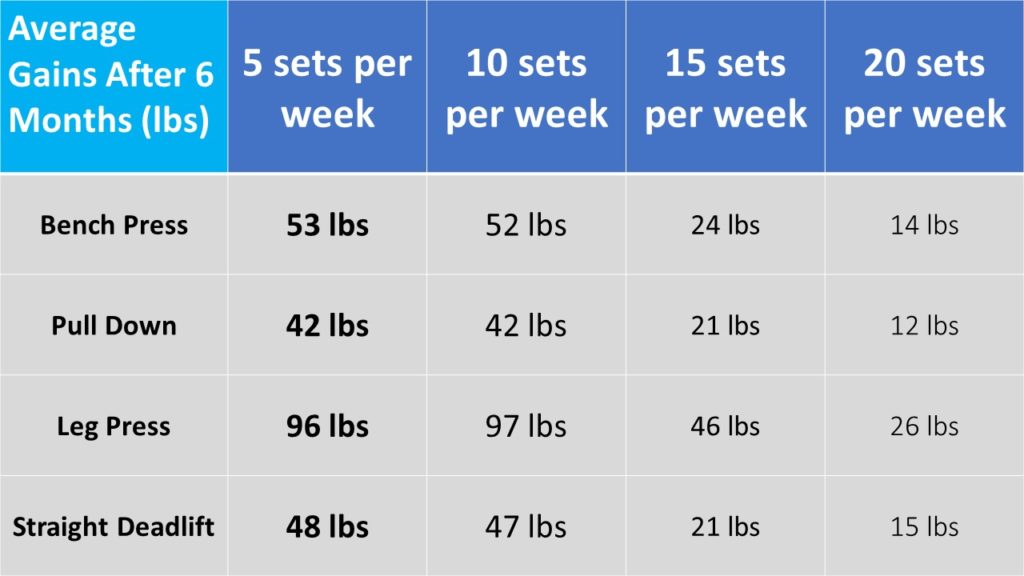“How often should I lift weights?” It’s one of the most common questions I get in the clinic and at the gym. It’s usually asked by people who work out every day but aren’t seeing much progress. They wonder if they are overdoing it. Essentially they are asking “Should I be working out less?” And overtraining is certainly a problem I see often.
After all, I generally have two kinds of patients: Those who won’t start working out, and those who can’t stop!
But it can be hard to help people draw that line. What is enough, and what is too much? How much should you be working out on a weekly basis? How do you maximize your strength gains?
Overtraining Syndrome
Overtraining Syndrome has been hard to define. It is often a sort of soft diagnosis that includes signs of overuse injuries, physical and mental exhaustion, and lack of progress in the gym. And ith today’s focus on high-intensity interval training (HIIT) and gyms feeling the need to constantly challenge their high-level athletes, I’ve seen a lot of overtraining lately. Of course, athletes usually push through these symptoms, believing this high-level of sustained intensity is necessary to make the gains they want.
But, do we know this is really true? Is it necessary to do squats, box jumps, and burpees for an hour a day four, five, or even six days a week? If exercise is good, then more must be better, right?
Wrong!

How Often Should You Lift Weights?
We are going to be talking about resistance training here. Weight lifting, essentially. And specifically looking at improving your strength and muscle mass. Because that’s really what you are going for when lifting weights. And that can benefit you in terms of metabolic diseases, osteoporosis, functional level, and weight loss. That’s why you should do resistance training no matter what your age, whether young or old. Heck, you should do resistance training even if you’ve had a joint replacement!
For a long time, we didn’t have any real idea of how many reps and sets you should do each week. There were plenty of “expert recommendations,” or even worse *gasp* BroScience, but very little research.
Am I Doing Enough Reps?
Prior to this, our only information came from pooling together small studies, in what are called “meta-analysis” to look for larger effects. One of the best of these was done by Brad Schoenfeld. This paper combined 15 separate studies to look at the effect of weight training on muscle mass. In that study, they showed that as people did more sets per week, they got better strength gains. But the data only went as high as ten sets per week. Performing up to ten sets a week showed steadily increasing benefits.
But they couldn’t say whether doing more than ten sets per week was better, or if there would be a level at which the extra exercise was detrimental. Given the current state of the fitness industry, that was a question that had to be answered. Because the Workout of The Day at many gyms can exceed 10 sets in a single session! But now we have a pair of good studies looking at exactly what happens when you go beyond ten sets per muscle group each week.
How Many Sets Should You Do Each Week?
A pair of studies were recently published that examined the effect of doing 5, 10, 15, or 20 sets of various weightlifting exercises over the course of about 6 months. One study focused on men and the other was on women. These have finally shown that when it comes to weightlifting, more is not always better. In these two recent papers, a group from Brazil studied the effects of strength training on experienced weightlifters. These men and women did either 5, 10, 15, or 20 sets per muscle per week.
And the results were frankly astounding. They found performing 15 or 20 sets per week had a massive negative effect on your strength gains. The body simply cannot rebuild fast enough to counteract that kind of punishment.

Overtraining Is A Real Problem
These studies found athletes performing 5-10 sets per week gained an average of 25% improvement in strength during the 24 weeks of the study. People that did 15 sets per week only saw a 12% improvement in their strength. And the people that did 20 sets per week? Even worse! They only gained 6% in strength over the course of the 6 month-long study. That’s right. People that worked out the most got far worse results than the people who worked out less!
To put that in real numbers, the people who did 5 sets added roughly 90 lbs to their leg press and 50 lbs to their bench press during these 6 months.
Those who did 15 sets gained 45 lbs on leg press and just 25 lbs on bench, just half the amount of the others.
Those that did 20 sets per week fared the worst of all! After all that work, they only saw a 25 lb increase on leg press and 15 lbs on bench. After 6 months of work!

So, what’s the take-home message here?
I think there are really two lessons to learn from these studies. The first is that our current trends in fitness often push people to exceed the recommended 5-10 sets of lifts per week. In fact, many HIIT gyms exceed these numbers in just a single session. So if you feel like you are hitting a wall at the gym, the answer may be that you just need to do less!
The second take home is that you don’t have to devote a ton of time to your workouts. You can do 5 sets of lifts per muscle group just two sessions at the gym each week. if you are pressed for time. You don’t have to become a “gym rat” in order to see the benefits of weight lifting! If you can only get there one day a week, just be sure to make it count. But frequency does matter, and studies show that going to the gym twice a week is superior to once a week. That holds true even if you do the same total amount of exercise.
Some people have figured these guidelines out on there own. Just look at the StrongLifts 5×5 program. Their recommendations consist of 5-10 sets per muscle group each week if you follow their program directly.
When You Should Exceed These Recommendations
Keep in mind that these recommendations are purely for building strength. If your goals include weight loss, cardiovascular fitness, and increased endurance then feel free to do more than this. I still recommend that variation of programming to include high-intensity functional lifting and sustained cardio.
But if you are doing all of this and not making the progress you want… take a couple more rest days!

